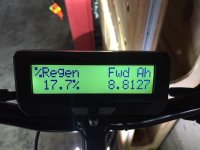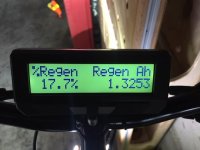RSwannabe said:Amberwolf - yes, it should be 17.7wh per mile. I corrected my previous post. The lights on the helmet are fully integrated into the structure and everything is smooth inside and out. I don’t think they impact safety in the event of a crash in any way.
In regards to the led strips, great minds think alike. Go back to the previous page of this thread and you’ll see I already added front white and rear red leds to the bike as you suggest. I have already received multiple approving comments about my new light setup from drivers and people walking by.
Ahhhh, I see why you are not having overheating problems compared to me, I am pushing an average of 36.4 Whrs per mile through my MAC and I am running a 13s battery.
Nice work...and thanks for all the documentation.



